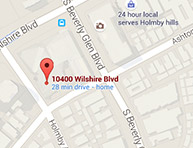“This is the land.” These are the words of our Torah as we conclude the book of Numbers. As Rabbi Pinchas Peli writes, “No more promises of milk and honey, no more rumors of all kinds regarding the land. The people must start seeing reality as it is, with all its problems and all its potential blessings. ‘This is the land!’”
As we see the land of Israel today through the algorithm in which we choose, it appears that we must choose the narrative we wish to accept. Yet, later in the parsha, we learn Moses’ instructions to the people before entering Israel: Ve-lo techanifu et ha-retz. This is usually translated as, “Do not pollute the land.” Yet, at the same time, this can be translated as, “You shall not flatter the land.”
Within the same words, we have two very different ways to have a relationship with Israel. Rabbi Peli teaches that the proper attitude is to not do either–do not defile and do not flatter. Rather, zot ha-aretz–“This is the land.” Each one of us, when we decide to visit a country or a city, chooses where to go, what to experience, and how to tell that story. Yet, let us remember zot ha-aretz, the land includes so much more of what we see and what we do. A visitor to California who goes to Disneyland does not see the challenges that exist in our own city. As we are quick to point to facts that support the story we wish to see, let us have the words of the Torah in mind-zot ha-aretz, this is the land. May we ensure that it continue to be our inheritance.


